Best Guitar Tuners – Types, Top Picks, & Buying Guide
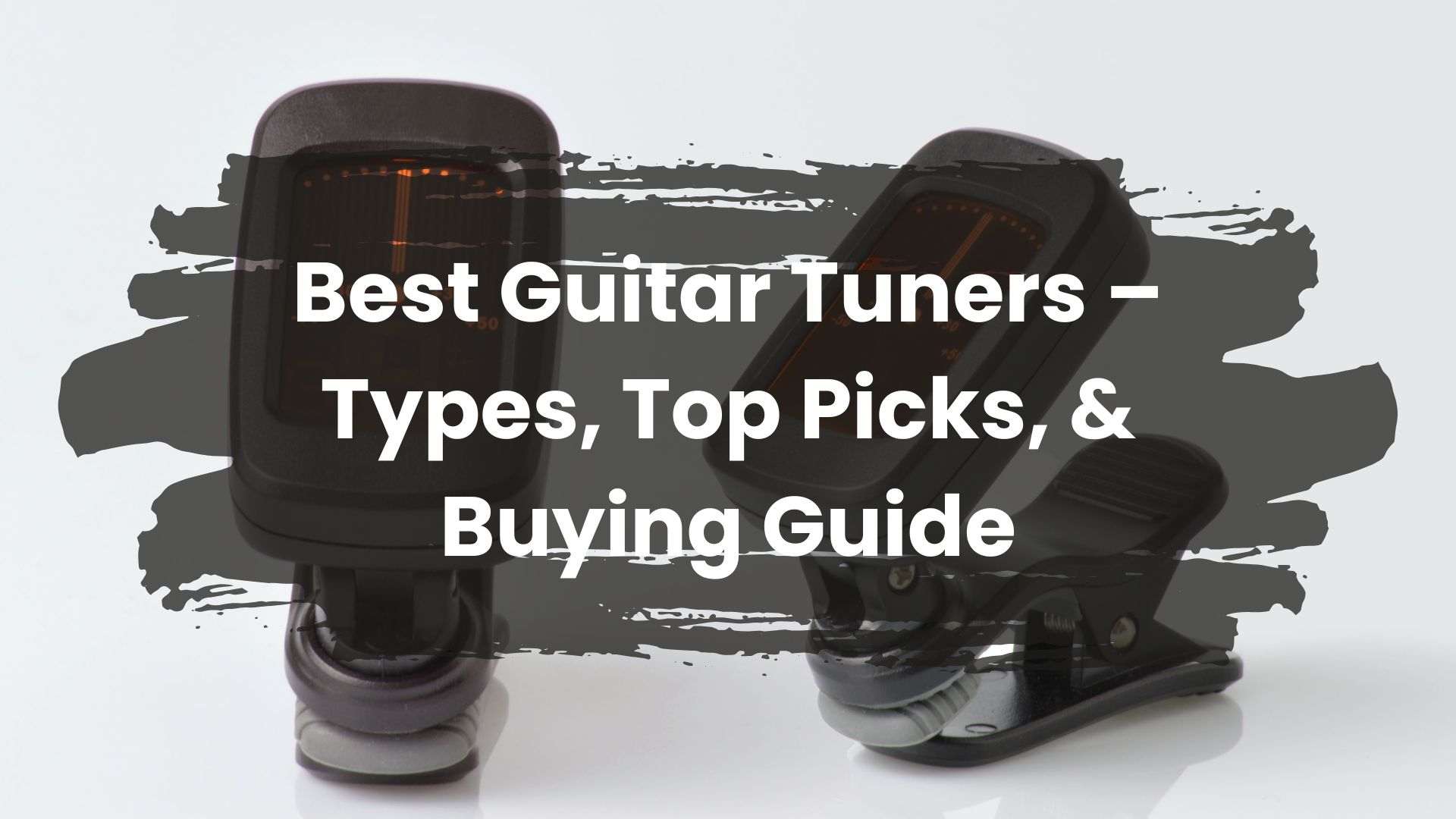
Have you ever struggled with hitting the perfect pitch on your guitar? We all have been there, where we used to waste so much time tuning the guitar to create flawless sound. Now, there is a reliable guitar tuner that makes a whole difference in creating flawless sound.
We are calling on all seasoned pro and beginner guitarists to pick the perfect tuner to save their time, frustration, and potentially even their ears. Here is a list of different types of tuners for your guitar, top picks from each category, and some helpful tips for choosing the correct tuners for your needs.
| Detailed Chart of the Best Guitar Tuners | |||
| Types | Brands | Price Ranges | Buy If |
| Best Clip-On Tuners | Zager High Accuracy Sonic Guitar Tuner | $25 | You want a clip-on that perfectly fits into any guitar. |
| Best Pedal Tuners | Korg Pitchblack Advance | $50 to $140 | You need a tuner that is easily operatable. |
| Best App-Based Tuners | Fender Guitar Tuner | Free subscription | You want to try out custom tuning on an app. |
| Best Soundhole Tuners | Planet Waves PW-CT-15 | $20 to $30 | You don’t want complicated features to tune your acoustic guitar. |
| Best Rackmount Tuners | Korg DTR-2000 | $50 to $100 | You prefer a tuner that can be used in a recording studio or live performance. |
| Best Budget-friendly Tuner | Peterson StroboStomp Mini | $100 to $130 | You have a limited budget but want something that can be used in both a personal place and a stage. |
| Best Premium Tuner | TC Polytune 3 | $80 to $130 | You need an advanced technology tuner to get the best tuning abilities. |
| Best guitar tuner acoustic | D’Addario NS Micro Sound Hole | $20 to $50 | You want a tuner only for acoustic guitar or acoustic bass. |
| Best guitar tuners for beginners | Snark super tight tuner | $15 to $30 | You don’t want fancy features; you just need basic attributes to complete the tuning. |
| Best guitar tuner for intonation | Sonic Research Turbo Guitar ST-300 | $100 to $230 | You are looking for a correct tuner for intonation with a precise outcome. |
| Best Guitar Tuners for acoustic-electric | Fender FT-1 | $10 to $20 | You try the tuners on electric, acoustic, bass guitars, and ukuleles. |
| Built-in Guitar Tuner for Electric Guitar | Travel Size Solid African Mahogany Electric | $1,000 (Guitar) | You are willing to buy a guitar that integrates the tuner so you don’t have to spend money on a tuner—two in one package. |
| Guitar tuner online free | GuitarTuna | Free Subscription | An online tuner will be sufficient for your needs. |
- Relatable Reads: How To Use a Guitar Tuner?
Best Guitar Tuners of 2025 – The Ultimate Winners In Every Category
As the name implies, a guitar tuner checks the pitch of your instrument before playing it. Strobe, chromatic, and polyphonic tuners are just a few of the many kinds available for guitars.
Features, such as the variety of tuning choices and modes, might vary significantly among models.
While ear tuning is an option, computerized guitar tuners provide rapid, accurate tuning—crucial for professionals in a hurry.
1. Best Clip-On Tuners: Zager High Accuracy Sonic Guitar Tuner
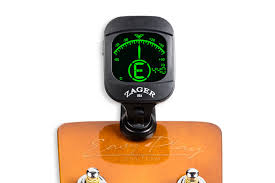
| Specifications | Game-Changers | Red Flags | Wins (Ratings) |
| → LED lights with green and red lights → Chromatic (12-note scale detection) → Compact and lightweight → CR2032 lithium battery | This tuning tool is super accurate and said to be more dependable than those tuning apps on your phone. Players say the pitch detection is really good, even after there’s a lot of background noise. Perfectly fits acoustic guitars, electric guitars, bass guitars, classical guitars, and travel guitars. | Users noted that this tuner offers basic features and is more suitable for beginners. | 5 out of 5 based on how easy it is to read and operate the tuner. |
Customer Review:
2. Best Pedal Tuners: Korg Pitchblack Advance
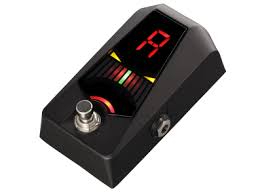
| Specifications | Game-Changers | Red Flags | Wins (Ratings) |
| → Four display modes → Accuracy 0f ±0.1 Cents → 100% true bypass → Bright LED meters → DC 9-volt, 200mA output to power other pedals → Adjustable calibration from 436-445Hz. → Powered by Battery or the AC adapter | The showstopper in this tuner is that it has four tuning modes, each suited to different musical instrument needs. The user interface is way easier with a mode button, a tuning mode button, a note name button, and a bypass button. | Even though the display is designed to be more readable, its brightness makes it less visible in outdoor setups during bright daylight. | 4.5 out of 5 based on performance and customer satisfaction. |
Customer Reviews:
[Image Sources: Amazon and Reddit]
3. Best App-Based Tuners: Fender Guitar Tuner
[Image Credit: Fender]
| Specifications | Game-Changers | Red Flags | Wins (Ratings) |
| → Custom and chromatic tuning → 5,000+ shapes to show any chord pattern → 2,000+ scales diagram and pattern → 65 different drum rhythms from 6 genres → Instruction videos for beginners → Available in both IOS and Andriod | This comes as a quick and accurate solution while tuning the guitar. It is easy to use and gives complete freedom to create custom tuning. | The Fender app has limited variation in terms of tuning the setting list. Players have also observed that the app can be easily disrupted by the additional noise in the surroundings. | 4.5 from the Google Play ratings. |
Customer Reviews:
[Image Sources: Google Play and Reddit]
4. Best Soundhole Tuners: Planet Waves PW-CT-15
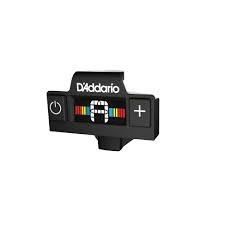
| Specifications | Game-Changers | Red Flags | Wins (Ratings) |
| → Non-marring soundhole clip → Fast and accurate → Multi-color display → Calibration ranges from 435-455 Hz | One is discreet looking and handy without moving around, unlike the other. Two, this goes perfectly with acoustic instruments without being too hard to install. | The tuner screen can be improved by adjusting the headstock shape to allow for better visibility for the players. | Customers gave 4.0 out of 5 based on its limited features. |
Customer Reviews:
[Image Sources: Amazon and Acoustic Guitar Forum]
5. Best Rackmount Tuners: Korg DTR-2000
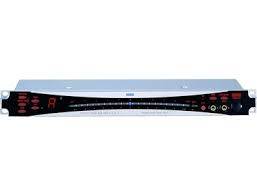
| Specifications | Game-Changers | Red Flags | Wins (Ratings) |
| → Adjustable calibration ranges from 438-455 Hz → LED tuning indicator → Three tuning modes → Mute jack with a latch-type foot switch for silent tuning. → Flat tunning capability | You will have the precise tuning for studio recordings and live performances. Plus, the design complements any gear ensemble. | For bass, the tuner has shown some hesitation while tracking low notes, which is a bit troublesome for a few users. | 5 out of 5 for being the best among other rackmount tuners. |
Customer Reviews:
[Image Sources: Reddit]
6. Best Budget-friendly Tuner: Peterson StroboStomp Mini
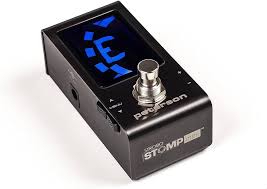
| Specifications | Game-Changers | Red Flags | Wins (Ratings) |
| → Space-saving pedal tuner → Accuracy up to 0.2 → Three bypass modes → LCD strobe display → 80 tuning mode | You can take it to the stage in your bedroom to adjust the intonation to its accurate pitch level. At this buying price, the precision will leave you with no questions. | Beginner players can get overwhelmed with its over-the-top features and displays. | 4.5 out of 5 for being reliable tuners in an affordable price range. |
Customer Reviews:
[Image Source: Reddit]
7. Best Premium Tuner: TC Polytune 3
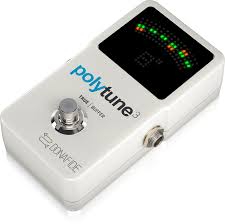
| Specifications | Game-Changers | Red Flags | Wins (Ratings) |
| → Intargeted BonaFide Buffer → Switchable true bypass → Alternate tuning modes → Auto-dimming LED display → Three tuning modes → Precise chromatic tuner accuracy within 0.5 cents. | First, the LED display shows its magic in broad daylight and also in dark stages with its PolyTune 3 dim features. Second, the strobe modes allow players to double track with its 0.02 cents accuracy. | Some users saw a lag in buffered mode when they tried to switch. Also, pro players are likely to have more features at this price. | 4.7 out of 5 for bringing impressive accuracy and durability. |
Customer Reviews:
[Image Credits: Reddit]
8. Best Guitar Tuner Acoustic: D’Addario NS Micro Sound Hole
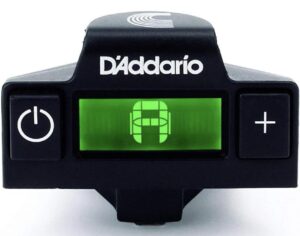
| Specifications | Game-Changers | Red Flags | Wins (Ratings) |
| → Calibration ranges from 410-480Hz. → Multi-color display → Non-marring clip → Quick and accurate tuning | You should buy it only to tune your acoustic guitar or acoustic bass without getting confused by the features of other guitar types. The battery seems to last much longer than other tuners. | The small LED displayed made it difficult to look at the players; even the battery was quite exposed for some. | 4.3 out of 5 based on its features and appearances. |
Customer Reviews:
[Image Source: Reddit]
9. Best Guitar Tuners For Beginners: Snark Super Tight Tuner
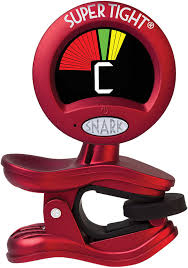
| Specifications | Game-Changers | Red Flags | Wins (Ratings) |
| → Display rotates 360 degree → Pitch calibration ranges from 415Hz to 466Hz. → Flat tuning High-sensitivity vibration sensor → Tap Tempo Metronome | This Snak tuner model is designed for beginners. It has basic features and a rotatable screen that’s easy to see from any angle. Plus, you can place this tuner on both the front and back of the headstock. | A few of the players noticed that the tuner didn’t perform well with a 12-string guitar, which was a turnoff for them. | 3.5 out of 5. The model lacks a few features, but it’s suitable for beginners, and customers are generally satisfied. |
Customer Reviews:
[Image Source: Reddit and Amazon]
10. Best Guitar Tuner For Intonation: Sonic Research Turbo Guitar ST-300
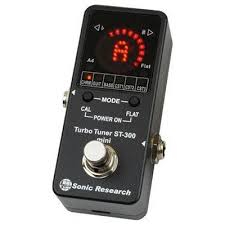
| Specifications | Game-Changers | Red Flags | Wins (Ratings) |
| → Super bright LED display → Muted output Chromatic and bass modes → Alternate tunings → Accuracy up to 0.02 cents → Pop-free true bypass | This one registers as a correct tuner for intonation. The speed and precision are on point. It’s fast, accurate, bright, and versatile. | It only has accurate bypass options and has no polyphonic tuning capability. | 4.0 out of 5 based on how accurate the tuner is. |
Customer Review:
[Image source: Reddit]
11. Best Guitar Tuners For Acoustic-electric: Fender FT-1
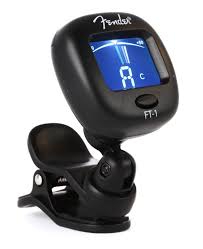
| Specifications | Game-Changers | Red Flags | Wins (Ratings) |
| → Five modes → Integrated vibration sensor → LCD display → Dual hinge design → Green backlight | You can use this tuner for a variety of instruments, including electric, acoustic, bass guitars, and ukuleles. | Users believe the screen and graphics could have been improved. Some found it to be smaller than expected. | 4.4 out of 5 for having multiple instrumental features and overall performance. |
Customer Review:
[Image Source: Amazon and Reddit]
12. Built-in Guitar Tuner for Electric Guitar: Travel Size Solid African Mahogany Electric
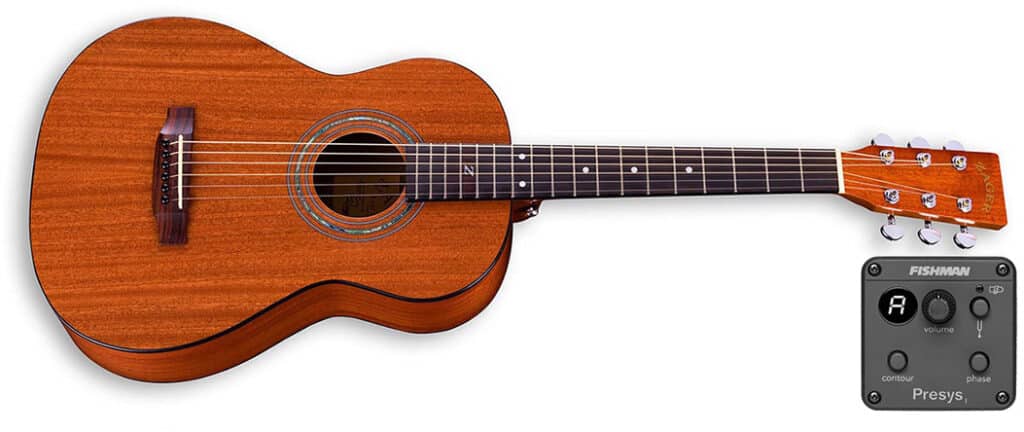
| Specifications | Game-Changers | Red Flags | Wins (Ratings) |
| → Built-in “Fishman” automatic tuner system → Tunes guitar in a fraction of the time → Grover tuning machines → Hand-carved bracing | You can easily tune your instrument with just one button without needing any extra gadgets. This design is great for players of any level because it’s so easy to use. Their tuners carefully tuned each string to the desired pitch with great precision. | Some users suggest that there should be more features and options to make it more appealing | 4.5 out of 5 based on how it actually works. |
Customer Review:
[Image Source: Travel Size Solid African Mahogany Acoustic | Zager Easy Play Guitars | Reviews on Judge. me]
13. Guitar Tuner Online Free: GuitarTuna
| Specifications | Game-Changers | Red Flags | Wins (Ratings) |
| → Tap Tempo Metronome → Variation of chords and games → Chromatic tuner → Custom tunings → 15 types of instruments → Manual mode to tune by ear. | The website can detect which string you’re playing, showing if you’re ‘too high’ or ‘too low.’ Like the actual tuner, Guitar Tuna gives a satisfying audio cue when you hit the correct pitch. | The app is convenient and accurate in quiet environments, but it may struggle in noisy places or during gigs compared to actual tuners. | 4.6 out of 5 due to easy accessibility and user-friendly interfaces. |
Customer Review:
[Image Source: Reddit]
How to Choose the Right Guitar Tuner for You?
When you go out to shop for guitar tuners, you will see a ton of options and features. Eventually, you will even get overwhelmed when figuring out which to pick. Generally speaking, you will see several things while shopping for a guitar tuner.
We have a small suggestion that you can keep in mind when you shop for a guitar tuner.
We won’t bore you with a long description; here are some small factors that will help you choose the right guitar tuner.
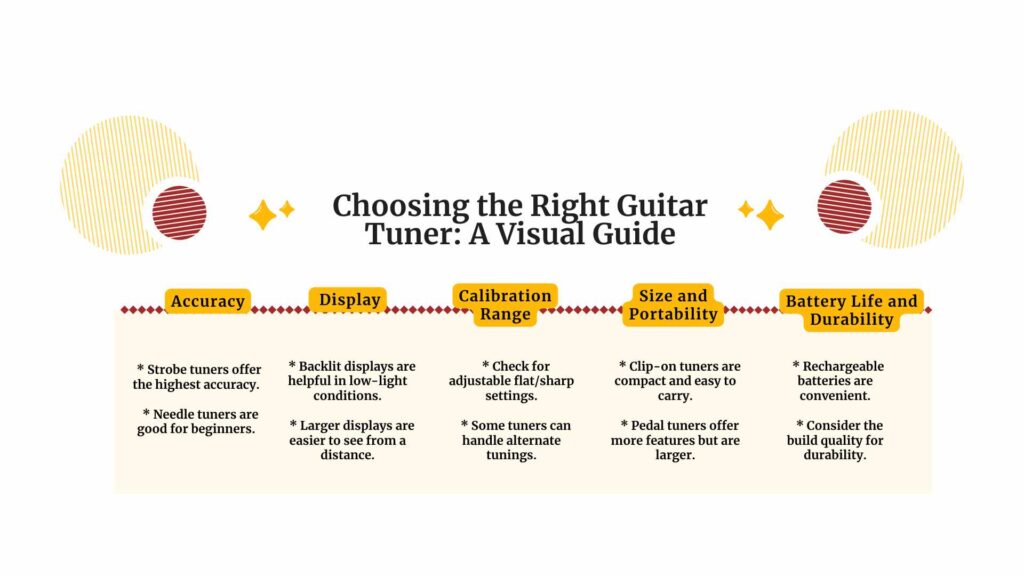
Additional tips from us:
- Try before you actually buy.
- Tuners can be expensive, so determine your budget and go for a professional or regular tuner.
- Reading reviews are crucial, so check online feedback from other users.
Compatibility with Different Instruments
Many guitar tuners are designed to be versatile, so they are not limited to one type of guitar or benefit. They can accommodate various other instruments rather than just electric and acoustic guitars.
| Tuner Type | Instruments | Features |
| Polyphonic tuners | Guitars, basses, ukeleles, banjos, mandolins | Synchronously detects multiple strings |
| Wide calibration Ramge Tuner | Guitar, basses, violins, violas, cellos | Variety of tuning reference pitches |
| Bass-specific Tuners | Bass guitar | Specialized in the lower frequency range |
| Universal Tuners | Guitars, basses, ukeleles, mandolins and more | Suitable for multiple instruments |
How to Use a Guitar Tuner Effectively?
Let’s learn how to use different tuners for the guitar.
Step-by-Step Guide to Using Different Types of Tuners
1. Clip-On Tuners
- Attach the tuner (Clip it on the headstock of your guitar, ensure it is tightly secured)
- Press the power button to turn on the tuner
- Selected the tuning mode
- Gently strum one string at a time
- Read the tuner display to see the pitch indication
- Adjust the tuning pegs clockwise to raise the pitch or counterclockwise to lower it.
- Repeat it for all strings until they are all in perfect harmony
- Double-check even after tuning all strings
2. Pedal Tuners
- Setup your pedalboard in an accessible location
- Plug the guitar cable into the input and output jack of the tuner
- Power on the tuner
- Select the tuning mode
- Activate the tuning mode by pressing the footswitch
- Gently pluck or strum the string you want to tune
- Read the tuner display
- Adjust the string tension
- Repeat for all strings to see if they all are in tune
- Exit tuner mode
- Give a final check to play some chords or notes
- Power off the pedal tuner
3. App-Based Tuners
- Download the tuner app
- Launch the app once it is installed
- Activate the microphone
- Navigate to the tuning mode selection
- Find a quiet place to set up the guitar for tuning
- Pluck the string you wish to time
- Observe the app’s display
- Adjust the string tension
- Tune all strings
- Double-check all the strings
- Close the app or leave it running for future use
4. Soundhole Tuner
- Position the soundhole tuner inside the soundhole of your acoustic guitar.
- Turn on the tuner or remove the protective tab.
- Select the tuning mode.
- Start tuning each string you wish to tune
- Read the display to see whether the string is sharp, flat, or in tune.
- Adjust the tuning pegs
- Continue the tuning process for each string
- Do a final check to verify that everything sounds correct
- Remove the tuner
Relatable reads: How To Tune A Guitar By Ear? – 5 Methods You Should Try
Common Mistakes to Avoid When Tuning Your Guitar
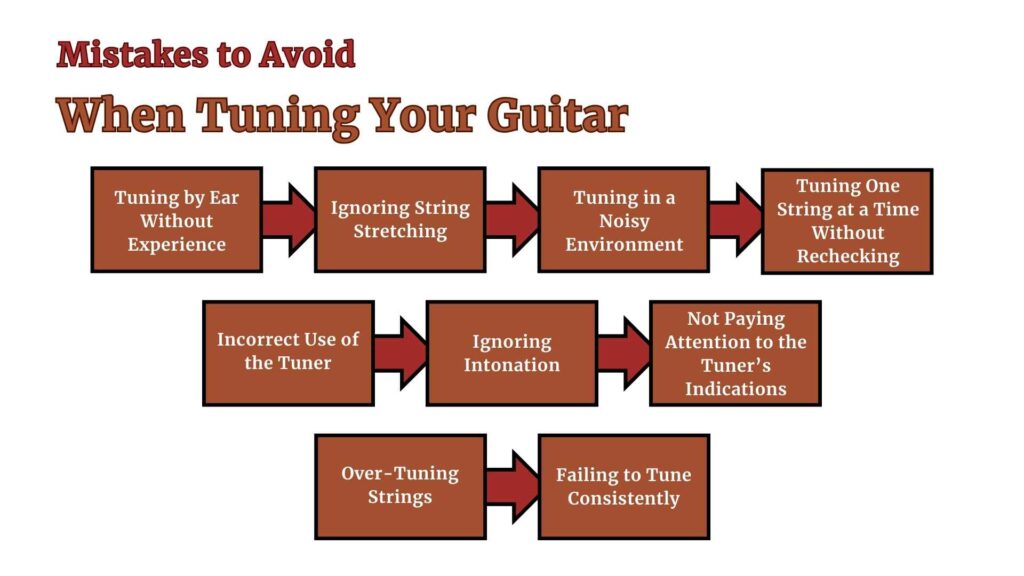
Expert Tips for Keeping Your Guitar in Tune
Proper Tuning Technique
| Standard Tuning | Alternate Tunings |
| The usual tuning for a guitar is when you tune the strings from low to high. It includes E, A, D, G, B, and E. | These are non-standard tunings that add unique sounds and texture to your playing.It includes open tuning, drop tuning, and custom tuning. |
- Check out the Top 7 Alternate Guitar Tunings – You Must Try Out
Tuning Stability
- Purchase quality strings that aren’t quick to stretch and break.
- Ensure your strings aren’t too tight or too loose
- Tune the guitar every day, especially before and after playing
- Don’t let your strings face sudden temperature fall or increase
- Don’t bend too much, as it will make strings go out of tune
- You can go for a locking tune, preventing your string from slipping out of tune.
Best Guitar Tuners for Beginners vs Professionals
Here is a quick rundown of what beginners and professionals look for in guitar tuners. Choose the one that suits your needs and make your purchase accordingly.
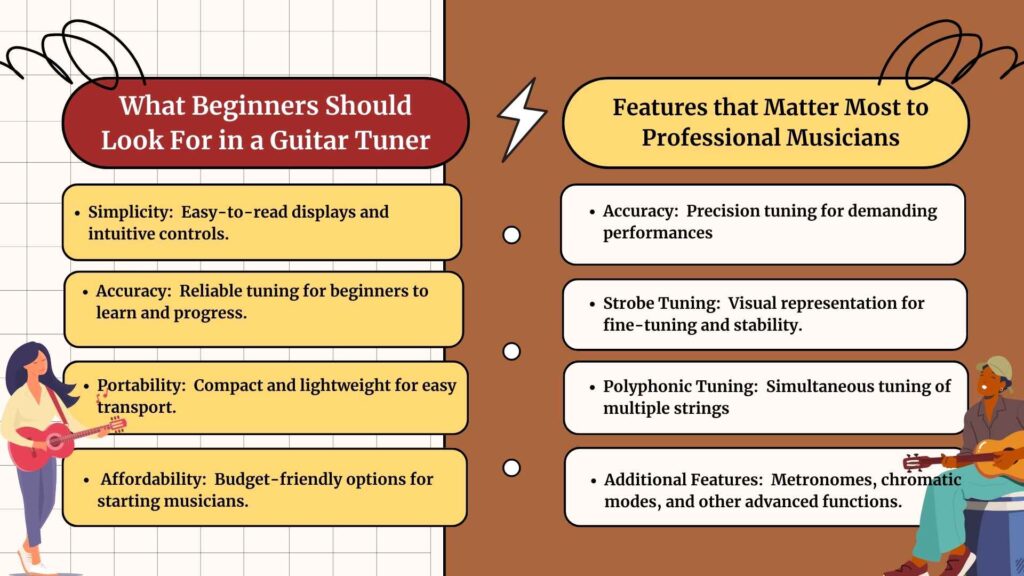
Frequently Asked Questions: Best Guitar Tuners
Polyphonic tuners like the Peterson StroboStomp HD have become famous for being the most accurate guitar tunes.
Clip-on tuners are most likely to hold accuracy up to +/- 1 cent, which is enough for professionals to use. But yes, polyphonic with +/- 0.5 cent accuracy is more precise.
App-based tuners are becoming popular, and they actually work well. The only problem is that they pick up noise from the surroundings and still need to improve their accuracy if they want to beat physical tuners.
You should tune your guitar before and after each playing session, or you can simply tune it if you hear any changes in sound.
The basic difference between them is that chromatic tuners detect all notes, while non-chromatic only pick the standard tuning (E, A, D, G, B, E).
Yes, you can use a bass tuner for your guitar, but it won’t fit perfectly, as bass tuners are designed for lower frequencies.
Led Zeppelin tuning typically uses standard E tuning but also experiments with drop D and other tunings.
When you get your guitar in standard tuning (E-standard), you start with the fat string (low E) and tune it to the skinny string (high E) in this order: EADGBE. This is the most common tuning used in many songs.
Drop C is considered the heaviest guitar tuning among others. These tunings are mostly used in heavy genres and bands.
Hz is the frequency used to tune a standard guitar. In Western music, 440 Hz is typical, but 432 Hz is gaining popularity for tuning.
The reason why string E gets most tuned is that it lets the users get easy fingering for learning the basic chords.
An easy way to tune to 432Hz is to use a pedal or clip-on tuner that allows you to adjust the pitch manually.
You can think of standard tuning as the usual way to tune a guitar. The string pitches are E, A, D, G, B, and E, going from the lowest to the highest pitch. The lowest guitar tuning is E2.
Yes, definitely.
Many guitar tunings are available on mobile; you can download them and tune your guitar instantly.
